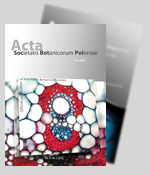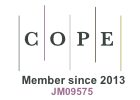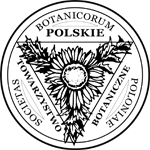Abstract
Micromorphological characterisation and the comparative statistical analysis of the size of Primula veris L. pollen grains collected in three natural and three cultivated populations were done. Observations were carried out with SEM. The obtained measurements were analysed with the use of one-way ANOVA, Kruskal-Wallis Test and the Student-t Test. Pollen grains from long-styled ('pin') flower-morphs were mainly 6 colpate and from shortstyled ('thrum') flower-morphs 8 colpate. Colpi of some grains from 'thrum' flowers were 'sinuous' and 'circular', and they incised into the apocolpium zone. Ornamentation of 'pin' pollen grains was microreticulate, with lumina up to 0.8 μm wide, and for pollen grains from 'thrum' flowers was reticulate and eureticulate with lumina 1.1-1.7 μm wide. In lumina of mesocolpium area some free columellae were observed. Pollen grains from 'thrum' flower-morphs were more variable in size, both in natural and in cultivated populations, than grains from 'pin' flower-morphs. The differences in mean length (P) and breadth (E) of pollen grains from 'thrum' flowers collected in cultivated populations were statistically important (FP = 3.154 for the critical F005 = 3.098; K-We = 7.469 for the critical Test value α=005 = 5.991). Pollen grains from 'thrum' flowers were bigger when coming from plants growing in natural populations (tE = 2.784 for the critical Test value α=005 = 2.001).
Keywords
Primula veris; pollen morphology; cultivation; statistical analysis; SEM







